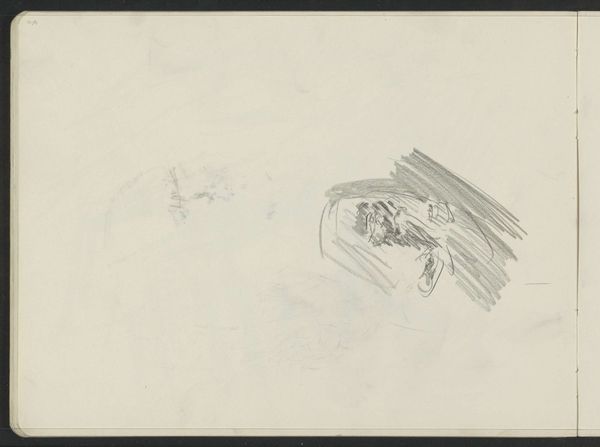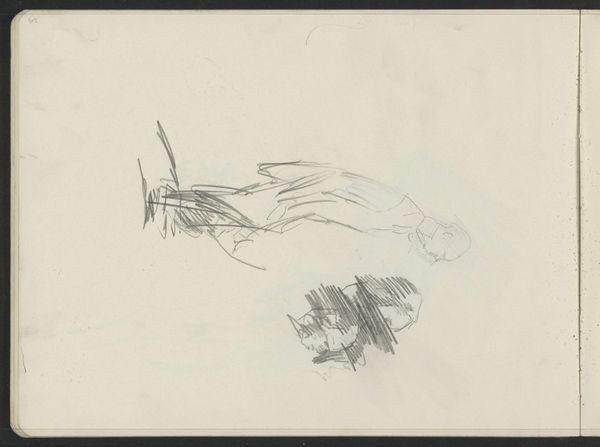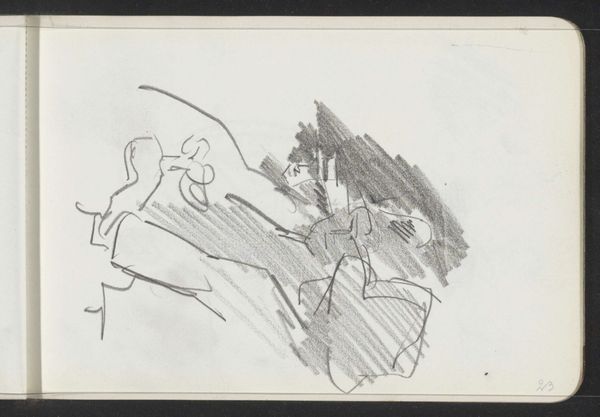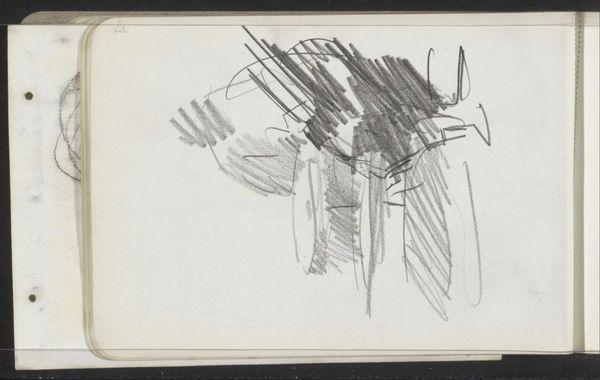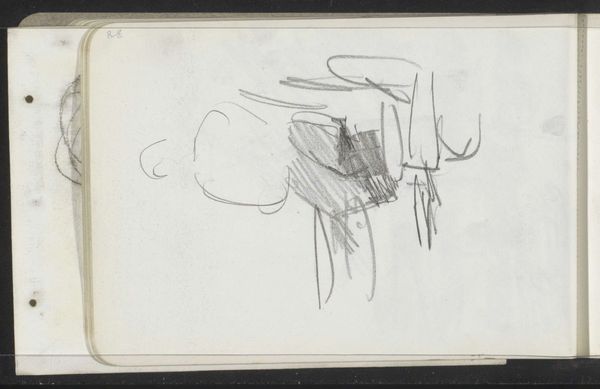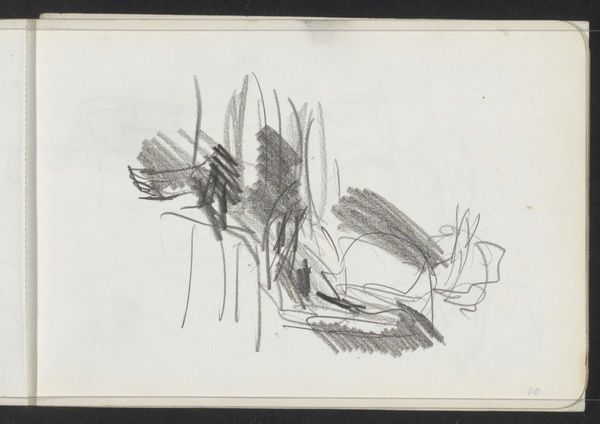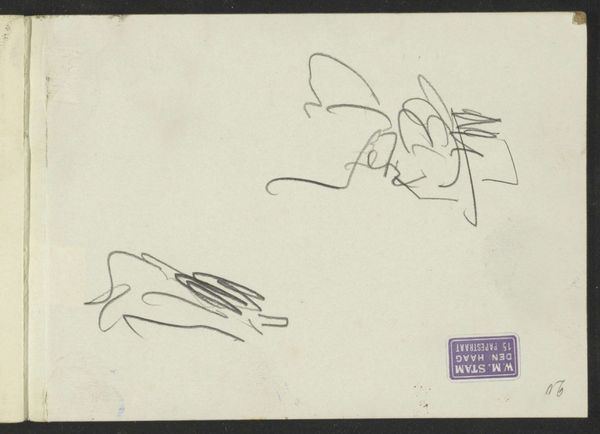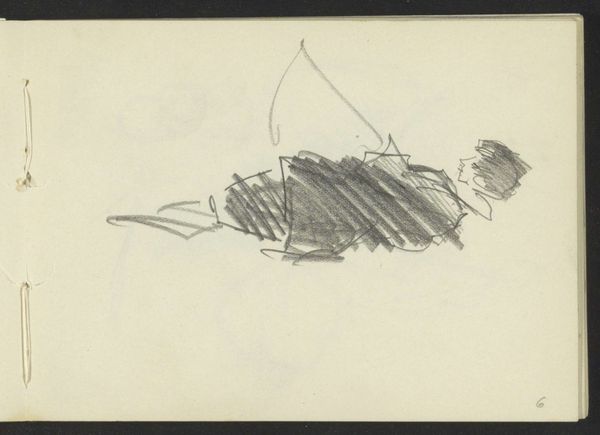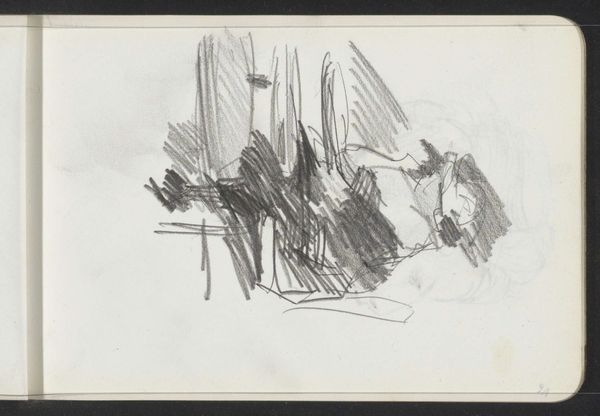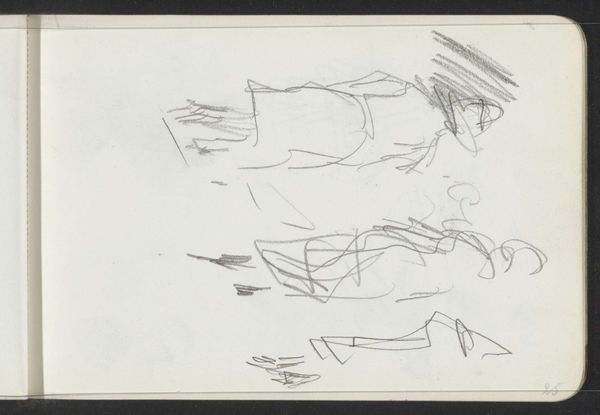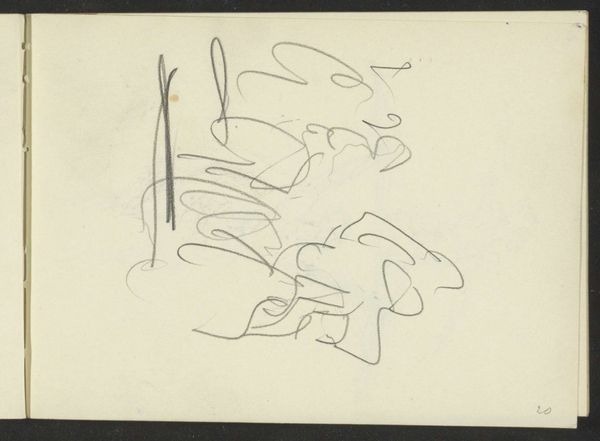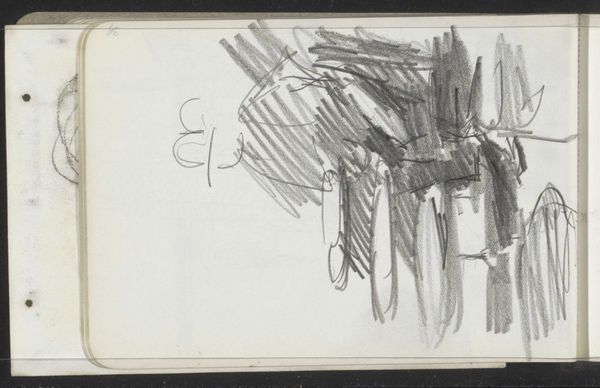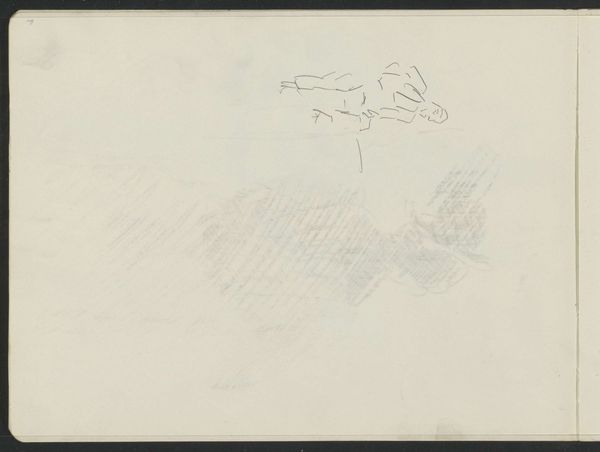
Copyright: Rijks Museum: Open Domain
Curator: This captivating sketch is titled "Figuur op een terras," or "Figure on a Terrace," created by Isaac Israels, likely sometime between 1875 and 1934. It resides here at the Rijksmuseum. Editor: It has such immediacy, almost as though we're peering into the artist's notebook. The quick, restless strokes suggest movement and a transient moment captured in time. Curator: Absolutely. Israels, known for his Impressionistic style, often depicted everyday life and the bourgeoisie with an unflinching eye. This sketch, rendered in pencil, feels particularly raw. One could contextualize this through Laura Mulvey's work. Do we, as the audience, engage in voyeuristic enjoyment, passively experiencing the lives of women, which positions women as spectacle? Editor: Yes, but considering the material constraints—pencil, paper, sketchbook—it’s less about spectical than direct engagement. This wasn't destined for public consumption at first; it’s work, experiment, play. We might think about what labor looks like here; the material production versus the "artist's hand" often seen in similar artworks. How do those different aspects create different readings about class, production, leisure, and privilege? Curator: Good points. The composition does seem intentionally fleeting, echoing his fascination with urban life's quick pace. I mean, the figure is barely there, really. The lack of clear facial details can suggest a certain anonymity, reflecting on class and gender norms and ideas concerning a patriarchal society, where this incomplete construction of the person almost reduces the subject to its mere physicality, so that only the outlines remain visible. Editor: Precisely! We should appreciate how that seeming incompletion allows for that material and production. It keeps us mindful of process. The roughness allows the viewer to glimpse into the conditions and method by which the art came into being. The viewer sees the artist's labor of mark-making through pencil on paper in order to generate art. It underscores the labor and the method required. Curator: Viewing art such as this prompts critical examinations of not only representation but power dynamics as well. How women were depicted through media impacts social norms that are carried on through society. It raises poignant inquiries, especially about identity politics and gender representation in that time period. Editor: Agreed, it provides a valuable opening. Curator: I feel that it sparks important inquiries about the ever changing views of how art impacts life, vice-versa. Editor: Ultimately it invites us to consider not only the image, but also the materiality that informs it and our perceptions about it.
Comments
No comments
Be the first to comment and join the conversation on the ultimate creative platform.
